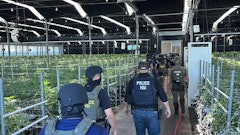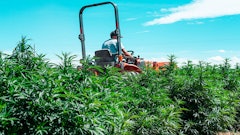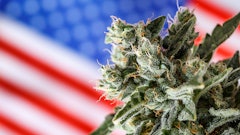
In a year already brimming with industry headlines, perhaps the most anticipated storyline comes to us from New York state, where the development of a new adult-use cannabis market awaits.
“It’s undeniable how strong of a market New York will be for cannabis,” says Anthony Coniglio, chief investment officer of cannabis real estate investment trust NewLake Capital Partners. “People do expect that this will be a very, very large state in the cannabis ecosystem as the industry converts illegal sales into legal sales.”
The population density alone is an ace card in New York’s portfolio, but so too is its geographic placement in the country and its cultural cache.
Perhaps the most notable asset on the table is New York City itself, home to more than 8 million people (with perhaps more than double that number commuting in for work) and a sprawling metropolitan area to boot. There is the temptation, naturally, to seek out real estate and eventual business operations within the city, but opportunities reveal themselves all over the state.
“Some of the best dispensaries that we see are located in secondary or tertiary markets,” Coniglio says. “People rush into the highly dense population centers often to find that, yes, they're highly dense, but you have a fair amount of, say, commuter traffic. So, I would focus on population density but also the dynamics of the population.”
As of February, about a third of all New York municipalities had opted out of the impending adult-use market. Most of those municipalities are the smaller towns and villages that dot the upstate landscape. But Coniglio is quick to assert: Don’t write off those towns and villages.
“I certainly can't speak for the hundreds of municipalities that opted out, but what I hear is that most of the time municipalities don't know what the rules are going to be,” he says, “and so they'd rather opt out now, wait for the rules to be written, review the rules, and then determine if they'll opt in.”
So, stand by!
RELATED: How to Win a Cannabis License in New York: 4 Tips for Success
Wherever interested entrepreneurs scout intriguing cannabis business locations, however, real estate acquisition becomes critical.
Ahead of the license application process, business owners will need to be able to point to a property and to describe their plans in great detail. Local government oversight will come into play, and likely some vital zoning decisions.
Real estate must be locked down before even getting to that point.
Of course, the issue is that a business license is far from guaranteed in this industry.
“The entrepreneur can enter into a contract with a landowner or a property owner to purchase the property, but you usually have to pay for that,” Coniglio says. “There's usually a fee that the landowner or the property owner would charge in order to take the property off of the market for that period of time. You’ll need to provide them with some sort of fee, some sort of income to supplement the loss of revenue that they would have on the property.”
This is important. It’s not just the property itself that must be secured, but the timeline leading up to the issuance of business licenses (and beyond, of course).
The chair of the state's Cannabis Control Board said late last year that licenses will not likely be issued until 2023.
“What entrepreneurs should focus on is their capital availability,” Coniglio says. “I really would emphasize that people should understand what their capital position is and how much capital they could really dedicate to securing a location and holding onto it for a protracted period of time.”
While adult-use regulations are expected to be released by the Office of Cannabis Management in March, it’s hard to say how long it will take to activate the market itself—to review license applications and to issue licenses, just for starters. Civil litigation is common enough in the early days of regulatory rollouts, so prospective business owners would do well to plan out for a 12- or 18-month waiting period—or even longer.
“It’s a very difficult balancing act, and one that we've seen play out in other markets that have transitioned from medical to recreational,” Coniglio says.

























